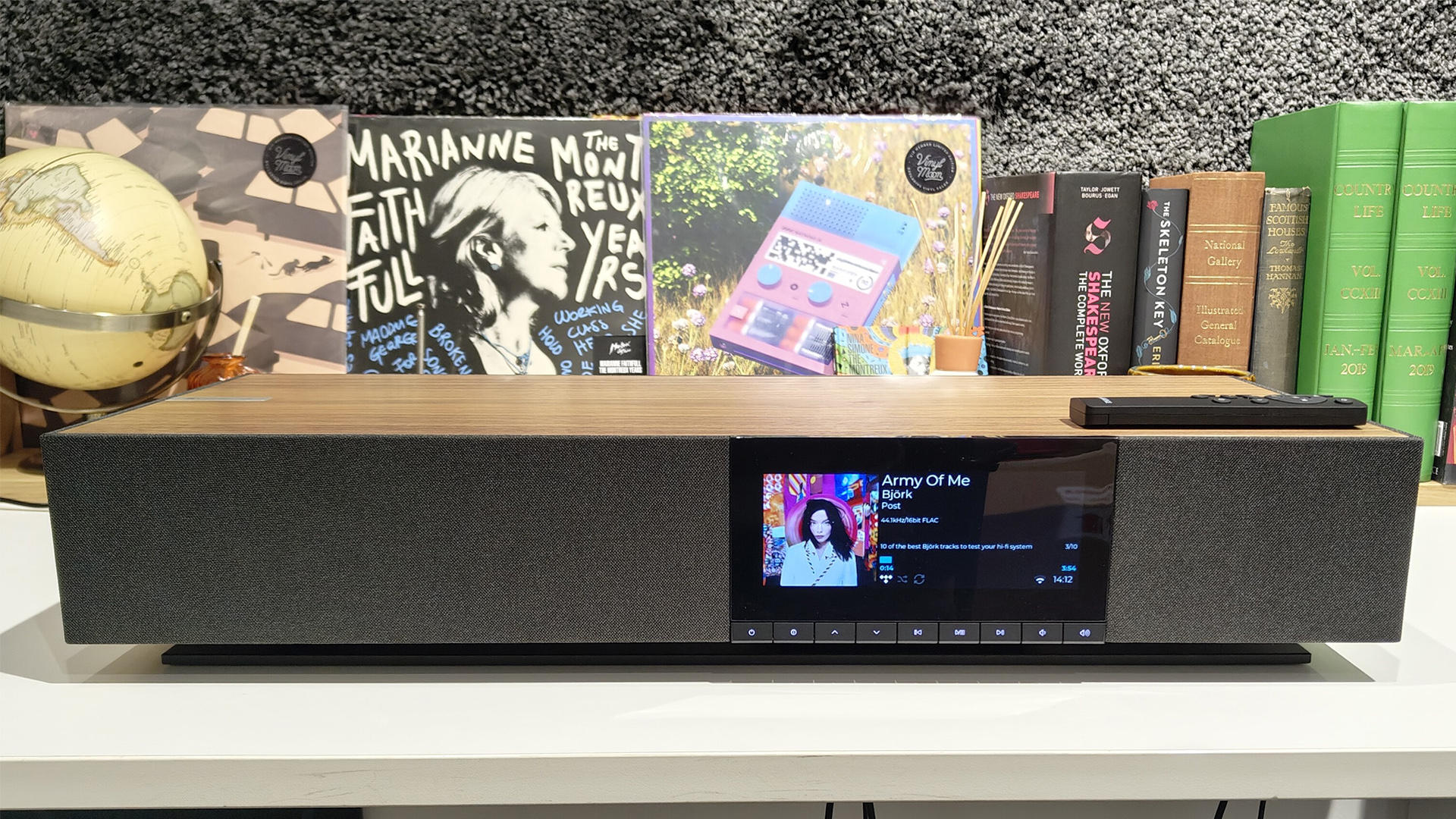What Hi-Fi? Verdict
The Evo One’s sonic strengths lie in its broad, room-filling presentation and fluid handling of dynamics – a touch more verve wouldn’t go amiss, though
Pros
- +
Produces a spacious, refined sound
- +
Fluid handling of dynamics
- +
Nicely made and well-appointed with features
Cons
- -
Presentation could be a tad more exciting and punchy
- -
Bass can sound detached from the rest of the frequency range
- -
Takes up quite a lot of space
Why you can trust What Hi-Fi?
“There can be only one.” “One Ring to rule them all.” “He is the One.” “I am the one and only.” Maybe we’re reading a little too much into it, but Cambridge Audio’s latest all-in-one music system makes a subtly bold claim. The cultural and literary canon is full of allusions to chosen figures who can alter the course of history as they forge their singular destinies, and such a seemingly small word can be interpreted in a few different ways; as ‘One’ box in which multiple functions and tasks can be performed or, perhaps, the ‘one’ and only all-in-one system that’s better than all the others.
Outperforming those others isn’t an easy task. While the world of all-in-one systems such as these isn’t as overstuffed as the land of Bluetooth speakers or wireless earbuds, there’s quality competition to be overcome. The Naim Mu-so 2 has been around for over five years yet continues to earn plaudits at its ever-reducing price, whereas the stunning Ruark Audio R410 is the bruiser to beat on this block. Some decent alternatives abound, but is the Evo the ‘One’ for you?
Price
Convenient as it may be, the Cambridge Audio Evo One doesn’t come particularly cheap. Clocking in at £1299 / $1499 / AU$2499, the Evo One is around what we’d expect for a product of this type. The Naim Mu-so 2 launched at £1299 / $1599 but has dropped to around £899 / $899 these days, since it debuted in the summer of 2019, whereas the new Ruark Audio R410 clocks in at £1299 / $1699 / AU$2599.
Build & design
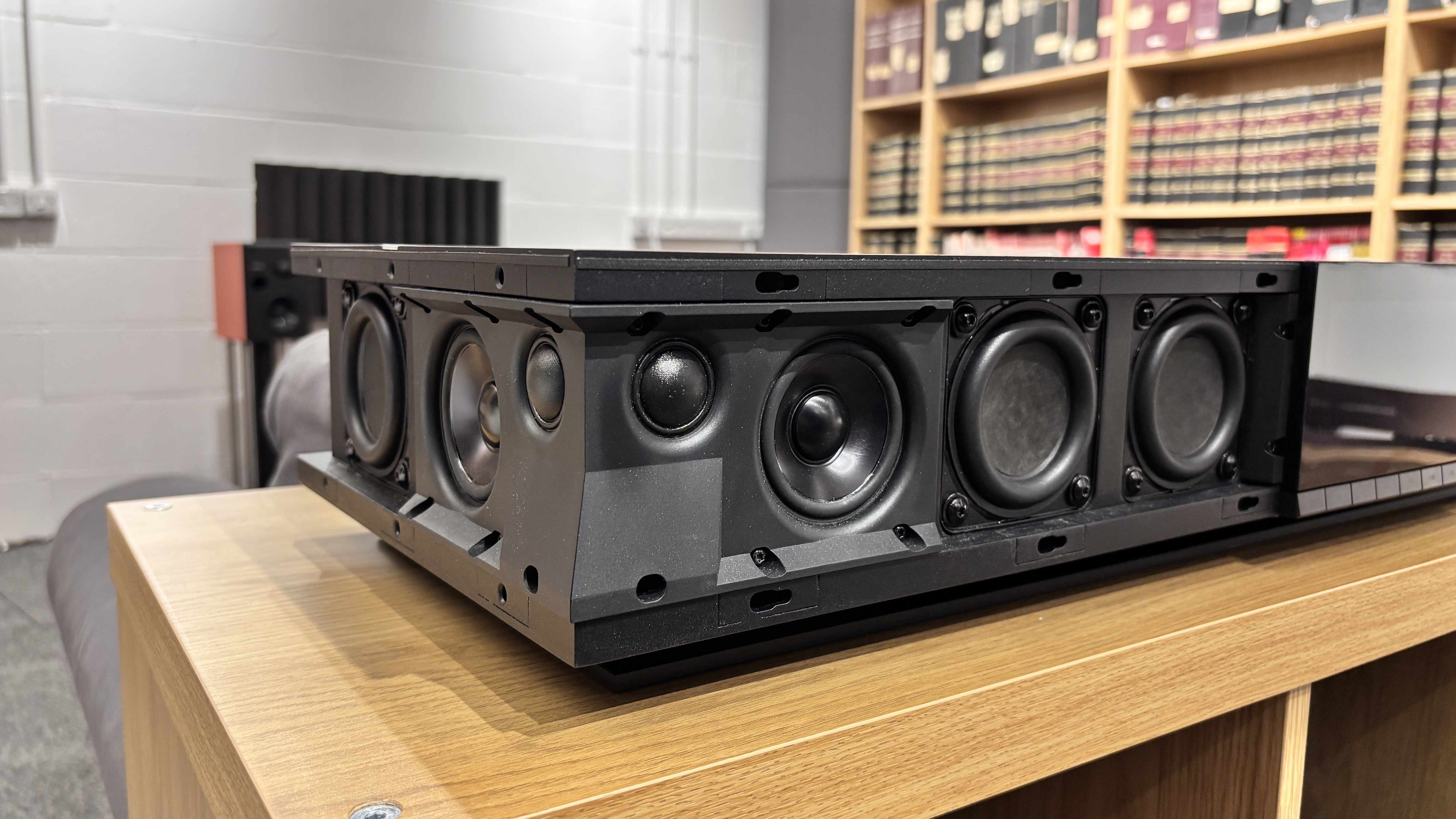
Built like a sort of scaled-down Brutalist structure, the Evo One’s careful blending of a rectangular exterior with that dominant front grille makes for a pleasing fusion of hard and soft. It’s a classy system and, when put up against the retro-modern aesthetic of the Ruark Audio R410 or the industrial looks of the Naim Mu-so 2, demonstrates that there’s more than one way to skin this particular metaphorical cat. The Ruark’s crafted wooden grilles are arguably on another level of drop-dead gorgeous, while Naim’s metal finish and illuminated control dial has a touch more je ne sais quoi, but the Evo One is far from an ugly stepsister.
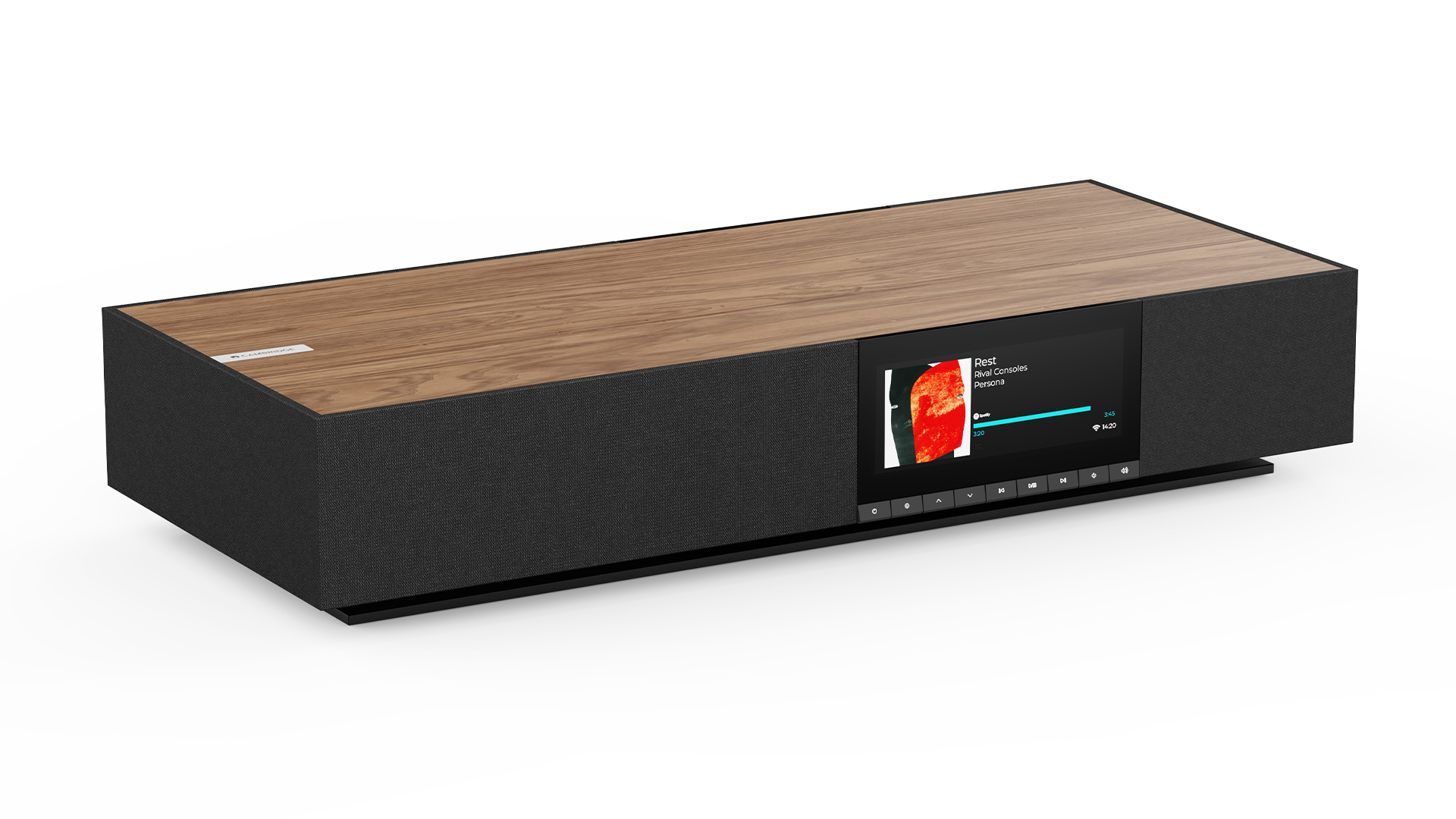
Power 700 watts
Bluetooth? Yes (5.1)
Streaming features Apple AirPlay 2, Chromecast, Spotify Connect, Tidal Connect, internet radio, wi-fi/wired ethernet, Roon Ready
Connections HDMI eARC, RCA line level input, MM phono input, optical input, USB-A
Dimensions (hwd) 12.9 x 67.5 x 29cm
Weight 14.5kg
Finishes x 1 (Brown walnut)
It is a bit of a beast, measuring 12.9 x 67.5 x 29cm (hwd) and weighing 14.5kg, so you’ll need to make sure you have a sturdy, robust and sufficiently capacious surface on which to house it. Beastly it may be in terms of dimensions, but there’s beauty to be found as we cast an eye, and indeed a hand, over the Cambridge’s particulars. The removable honeycomb grille sits tight to the main unit, whereas that smooth walnut top panel – very much the star of the show – lends a premium feel. Squat down and you’ll notice that the Evo One is mounted on a recessed base stand, allowing the speaker to stand above its surface without detracting from the frontage’s bold aesthetic – again, that’s a nice touch.
To keep you in the picture and grant you hands-on control of your chunky all-in-one unit, the Evo One furnishes you with a 17cm colour display screen sitting above a decent array of slightly cheap-feeling physical buttons. That display screen grants access to the likes of album artwork, track information or a pair of virtual VU meters, whereas the accompanying buttons handle playback, volume control, play/pause and information selection.
For access at a distance, Cambridge Audio has provided a utilitarian but decently furnished plastic remote control for managing the same range of functions as handled by the on-unit buttons. If that seems a bit too 20th-century, the StreamMagic app will perform the same range of functionalities while also granting access to the Evo One’s built-in array of streaming services, platforms and source inputs.
Features
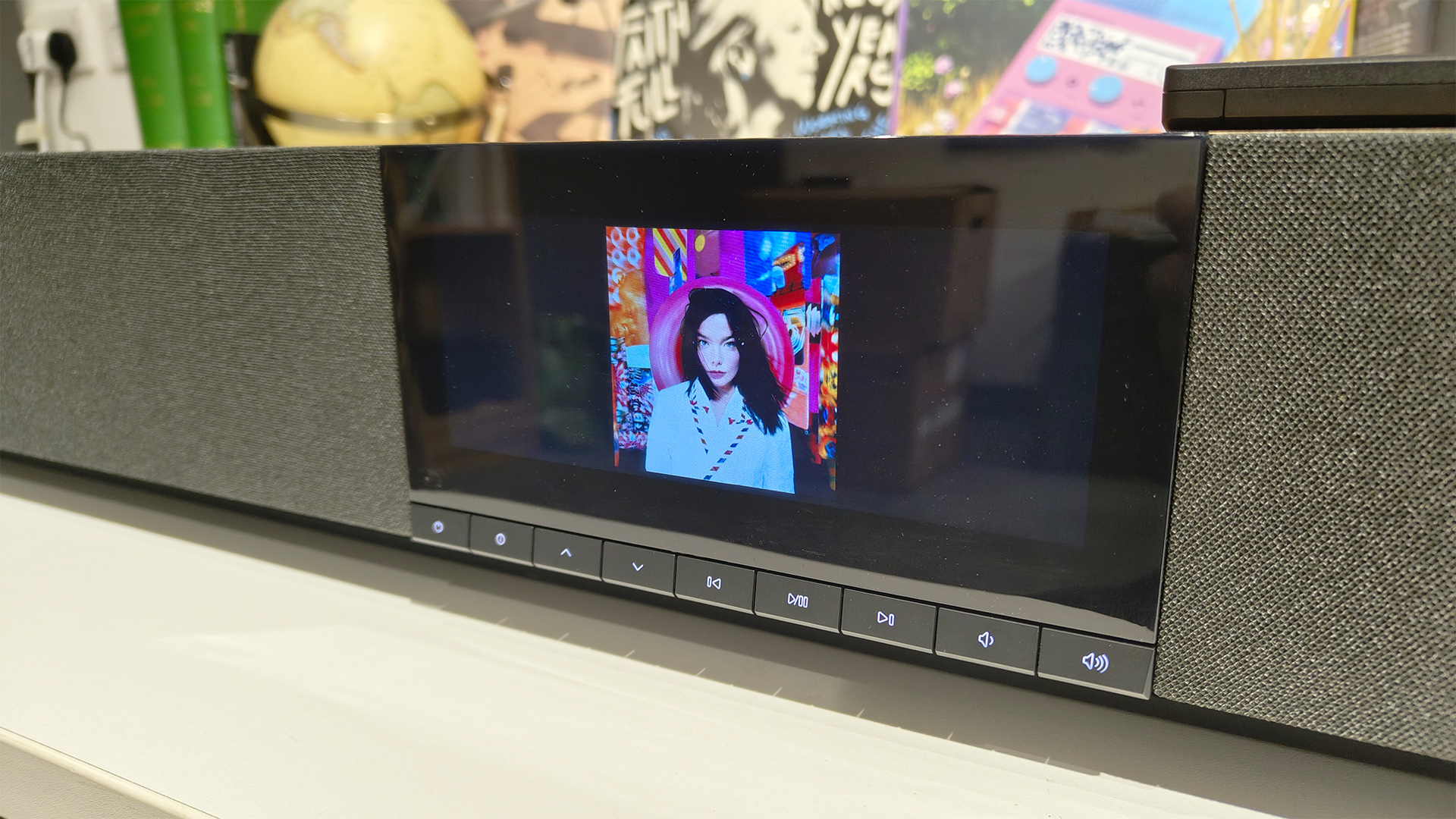
Audio can be personalised in the StreamMagic app via a seven-band equaliser. We get on well with the StreamMagic platform, finding it to be reasonably intuitive and easy to use once you become accustomed to its particular layout. It’s worth taking some time to familiarise yourself with the app, too, as key functions and customisation options – such as picking which inputs can be accessed via the on-unit display – are there to be discovered amidst the more main-event settings and services.
Speaking of services, the StreamMagic platform allows for direct streaming via Tidal Connect, Spotify Connect, Deezer and Qobuz, with support for hi-res audio files up to 32-bit/192kHz over wi-fi or an ethernet connection. It's even Roon Ready, while connectivity options come courtesy of Bluetooth 5.1, AirPlay 2 and Google Cast – naturally, we’d recommend streaming over wi-fi for a sound that’s superior to the performance offered over Bluetooth.

If you want to go wired, an HDMI eARC means you can hook up to a TV and use the Evo One as a rather chunky soundbar, while a moving-magnet phono stage lets you hook up directly to your chosen turntable. A line input for analogue sources, an optical digital input and a USB-A port round things off nicely.
The Evo One houses a whopping 14 drive units, with four 25mm silk dome tweeters flanking the corners, accompanied by four 57mm aluminium cone midrange units and six 70mm woofers surrounding the entire system. That’s a lot of drivers, configured to produce an expansive, room-filling soundfield and provide a wide dispersion so that the sound balance doesn’t change appreciably regardless of where you are in the room. The Evo One has the power to match its substantial driver array via its 700 watts of amplification, all aided by digital signal processing technology, which Cambridge Audio claims helps to produce a deep, clear and controlled lower-end signature.
Sound
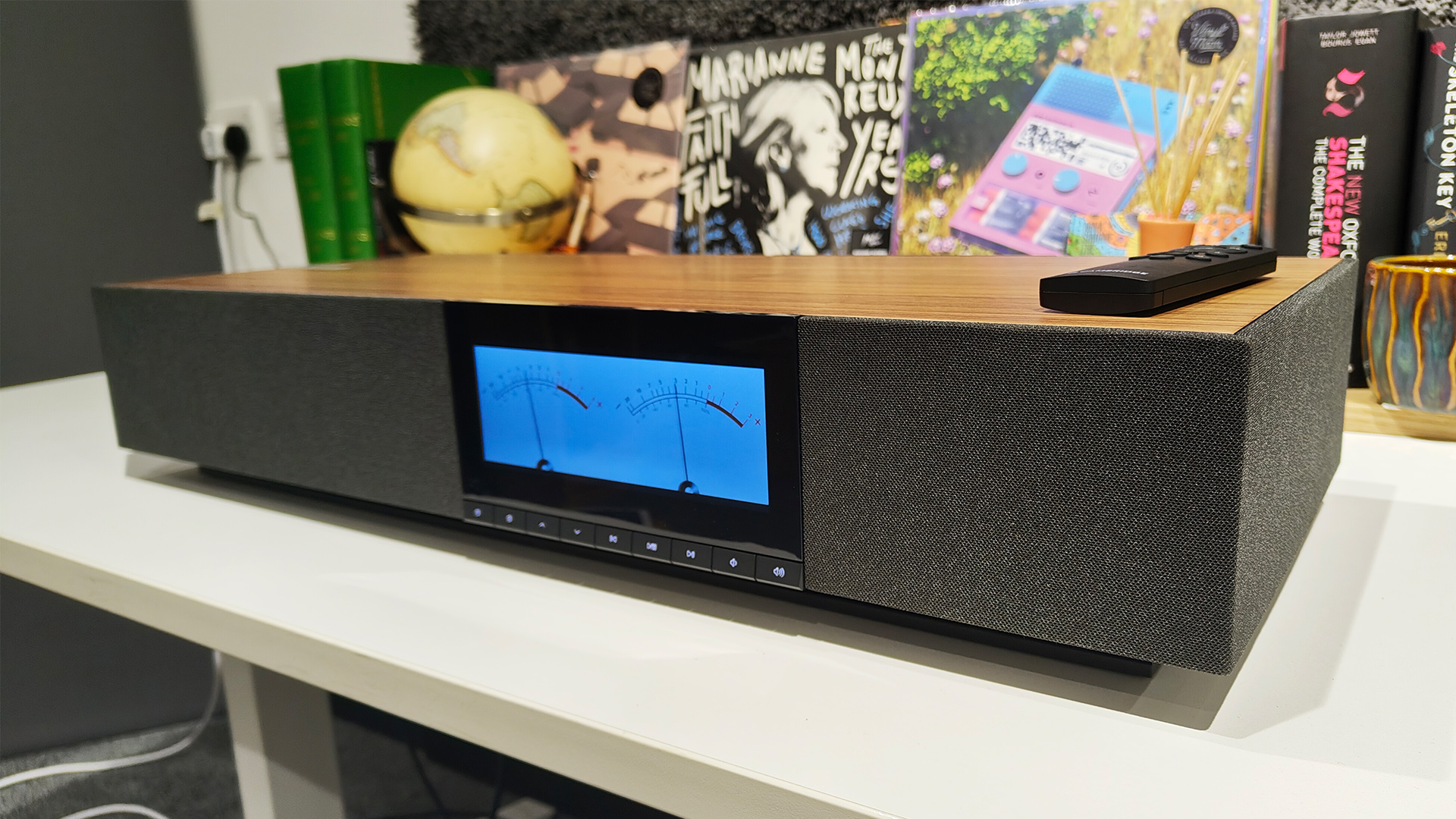
Those drivers unquestionably deliver that promise of an expansive soundfield. The Evo One is a burly unit, and it produces a sound that’s similarly bold and broad in terms of its size and scale, spreading music evenly and confidently across our test room. No matter where you stand, the sonic character you receive remains remarkably consistent, and while scurrying off to a corner of your test chamber doesn’t yield quite the same results as plonking yourself directly in front of the Evo One, the system’s general consistency makes it a fine candidate for accompanying evening soirees during which guests are scattered across your capacious front room.
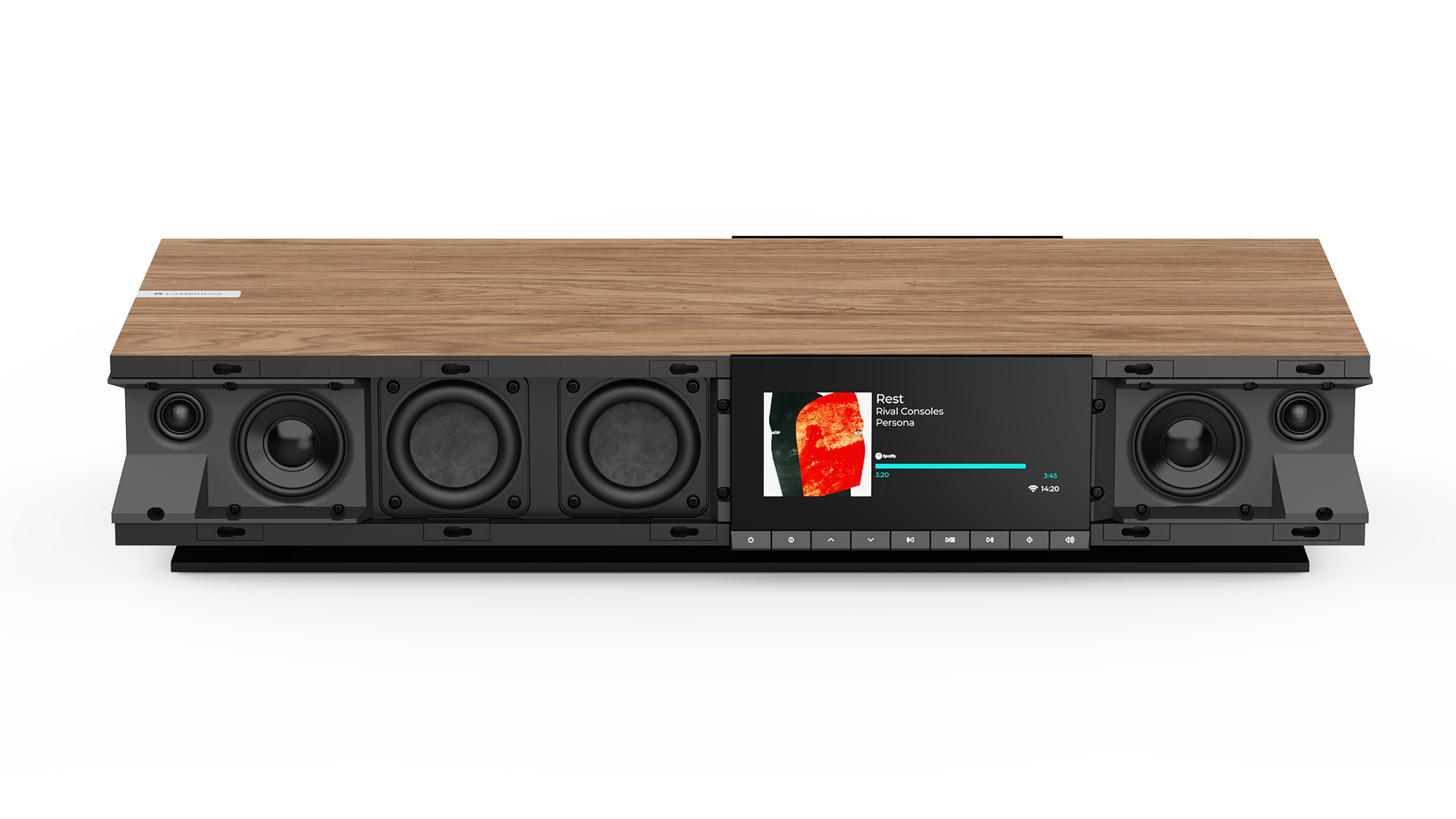
The Evo One would probably fit in rather nicely at such a well-to-do event. This is a mature, considered performer, the sort of system that wouldn’t be out of place wearing a dinner jacket at a ’50s cocktail party with a Martini in one hand and a cigar in the other. Almost everything about its sonic character comes across as organised, controlled and considered, rounding off notes’ harsh edges and showing enough restraint to rein in any potential of screeching trebles or blobby bass. That said, the Evo One’s lower end can sometimes sound a little disconnected from the rest of the middle and upper frequencies, with the more compact, punchy Naim Mu-so 2 sounding more cohesive and contained when we assess it for comparison.
Rest assured that Cambridge Audio’s all-in-one contender has more to recommend it than just its spacious presentation. We load up a recording of Hans Zimmer’s Up Is Down from the third Pirates Of The Caribbean movie, noting how adeptly the Cambridge system takes a smooth, fluid approach to the track’s tricky dynamic shifts. Rises and swells in volume move as naturally as a ship rocking and riding on an undulating sea, giving the track a natural, unfussy character.
Sophisticated and easygoing the Evo One may be, but this smooth operator doesn’t seem the sort to loosen its bow tie and join in with the more raucous post-cocktail after-party. Up Is Down is certainly fluid and controlled, but we’re always aware of a speaker that’s not quite willing to let loose and really entertain. There’s a slight softness to the overall presentation, rendering Spacehog’s soaring rock anthem In The Meantime as lacking in punch and verve, especially when the crunchy guitars kick in and the chorus takes flight. We crave a little more punch and snap, further noting that the system’s slightly soft approach does rob the Evo One of the propulsive, front-footed assertiveness possessed by the similarly-priced Ruark R410.
Moving away from streaming our favourite Tidal test tracks, Cambridge Audio has been generous enough to provide its sturdy box with a host of connectivity features – this is a do-it-all system after all – so it’s up to us to see how well they perform. We use a Cyrus CDi CD player to test the Evo One’s built-in DAC and find that it is decent but lacks the clarity and transparency of the analogue auxiliary input. We also use the built-in phono stage to hook up a Rega Planar 3 RS Edition turntable, and while the resulting sound is perfectly acceptable, it again feels rather constrained and dynamically stunted. If vinyl playback is important to you, consider a dedicated phono stage such as the Rega Fono Mini A2D Mk2.
Verdict
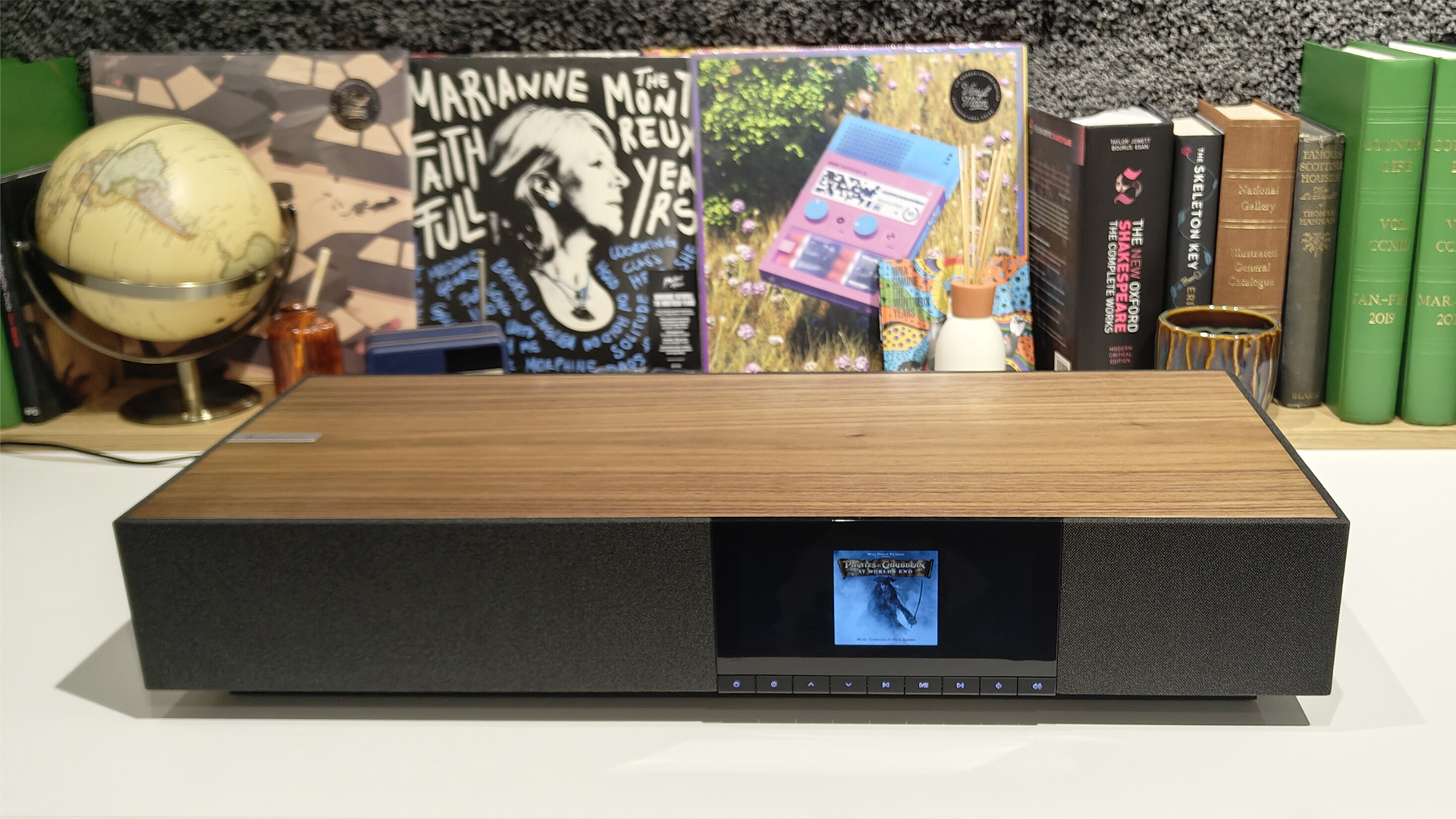
The Cambridge Audio Evo One is a good all-in-one system, if not quite a great one. If you seek the absolute pinnacle of what a unit such as this can sound like at this price, the Ruark Audio R410’s dynamism and punch make it our five-star pick at the top of the pile, while the Naim Mu-so 2 is a punchier, entertaining alternative made even more attractive thanks to its ever-dropping price.
That’s not to say that we can’t see a place for the Evo One in this area of the market. Its pleasing design, solid versatility and all-encompassing feature set give it broad appeal, while the Evo One’s ability to spread out its sound far and wide will appeal to anyone who needs their room filled with spacious, mature and well-balanced sonic goodness.
First reviewed: February 2025
SCORES
- Sound 4
- Build 4
- Features 5
MORE:
Read our review of the Ruark Audio R410
Also consider the Naim Mu-so 2
Best hi-fi systems: CD, vinyl and streaming music players for the home
Now Playing: 6 songs we've been listening to in the What Hi-Fi? test rooms
What Hi-Fi?, founded in 1976, is the world's leading independent guide to buying and owning hi-fi and home entertainment products. Our comprehensive tests help you buy the very best for your money, with our advice sections giving you step-by-step information on how to get even more from your music and movies. Everything is tested by our dedicated team of in-house reviewers in our custom-built test rooms in London, Reading and Bath. Our coveted five-star rating and Awards are recognised all over the world as the ultimate seal of approval, so you can buy with absolute confidence.
